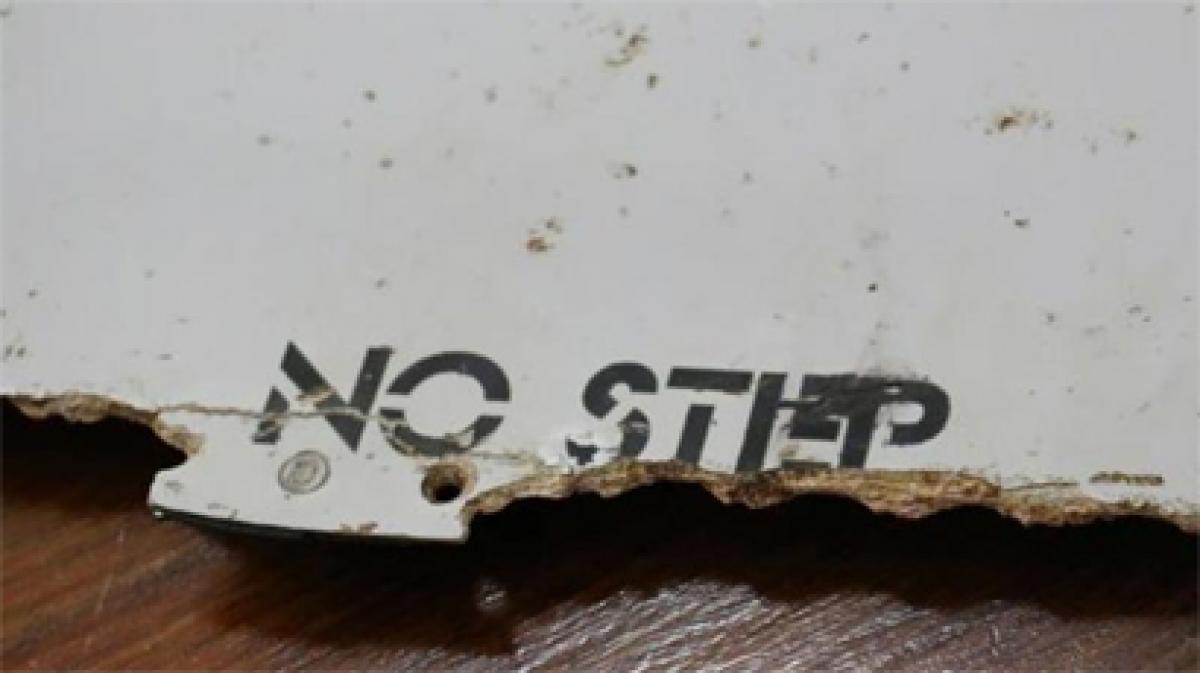Live
- Over 7,600 Syrians return from Turkiye in five days after Assad's downfall: minister
- Delhi BJP leaders stay overnight in 1,194 slum clusters
- Keerthy Suresh and Anthony Thattil Tie the Knot in a Christian Ceremony
- AAP, BJP making false promises to slum dwellers for votes: Delhi Congress
- 'Vere Level Office' Review: A Refreshing Take on Corporate Life with Humor and Heart
- Libya's oil company declares force majeure at key refinery following clashes
- Illegal Rohingyas: BJP seeks Assembly session to implement NRC in Delhi
- Philippines orders full evacuation amid possible volcanic re-eruption
- Government Prioritizes Welfare of the Poor, says Dola Sri Bala Veeranjaneyaswamy
- Two Russian oil tankers with 29 on board damaged due to bad weather
Just In

Australian authorities say they are not ready to declare defeat in the hunt for missing plane MH370 and remain “very hopeful” of finding it despite the clock ticking on the massive search effort.
Australian authorities say they are not ready to declare defeat in the hunt for missing plane MH370 and remain “very hopeful” of finding it despite the clock ticking on the massive search effort.
The hunt in the treacherous southern Indian Ocean where the Malaysia Airlines jet is believed to have come down on March 8, 2014 involves sophisticated ships and equipment and is projected to cost up to $180 million.
But it has so far drawn a blank as the two-year anniversary of the mystery disappearance nears.
Only a two-metre-long (almost seven-foot) flaperon wing part that washed up on a Indian Ocean island beach last July has been confirmed as from the aircraft, although suspected debris found in Mozambique this week could be another breakthrough.
The latest find will be brought to Australia for examination, with transport minister Darren Chester saying its location was consistent with drift modelling based on the plane crashing in the area being probed.
Australia’s search chief Martin Dolan said he still held out hope of finding MH370 as an end to the difficult underwater hunt edges closer with the scouring of more than 85,000 (32,818 square miles) of a designated 120,000 square kilometres zone complete.
“We haven’t yet located the aircraft but we have a considerable area still to cover over 30,000 square kilometres still to go,” Dolan, chief commissioner of the Australian Transport Safety Bureau (ATSB) told AFP.
“So we remain very hopeful that we will find the aircraft.”
The plane, which disappeared after inexplicably diverting from its planned Kuala Lumpur-Beijing route, had mostly Chinese, Malaysian and Australian passengers on board.
Those three governments have agreed that when the target area is fully searched, expected around June to July, they will pull the plug unless “credible new information” emerges.
Relatives of MH370 passengers have issued an emotional plea to keep searching beyond July, with one group representing the families begging authorities not to “simply chalk it up as an unsolvable mystery”.
‘Searching in right place’
Despite the search having turned up nothing other than some long-lost shipwrecks, Dolan said he remained confident it was looking in the right place.
The area being scoured, off Western Australia, was identified using analysis of where the plane was calculated to last emit a satellite “handshake” and how the jet went down.
Analysis points to it entering the water within the so-called seventh arc, with investigators saying the “most likely” scenario was that no-one was at the controls and the plane ran out of fuel.
Some critics have questioned why authorities do not give greater weight to the “rogue pilot” theory that someone was at the controls.
Dolan said investigators considered all scenarios including the “very unlikely” possibilities the jet was ditched under engine power or was glided into the water by someone after it ran out of fuel and presented them to the three governments.
But the alternative possibilities and their potential debris fields would involve an area three times the current search zone.
“There’s always been that uncertainty, which is why we’ve said we’re working with probability, we say it is very probable that the aircraft is in our search area, but it’s not certain.
“They (the governments) are aware of the potential other scenarios but they are saying that 120,000 square kilometres is the most that’s practicable for governments and for us.”
If nothing turns up in the remaining stretches of seabed, Dolan said it was “very unlikely that any significant new evidence will come to light”, meaning the search will end.
Analysis of the flaperon has so far not offered further information to help solve what happened to the plane.
“The main piece of missing evidence to solve this mystery is the aircraft itself, which is why we’ve focused so much effort on the search and on finding it,” said Dolan. “And I can’t see where alternative information is likely to come from.”

© 2024 Hyderabad Media House Limited/The Hans India. All rights reserved. Powered by hocalwire.com







